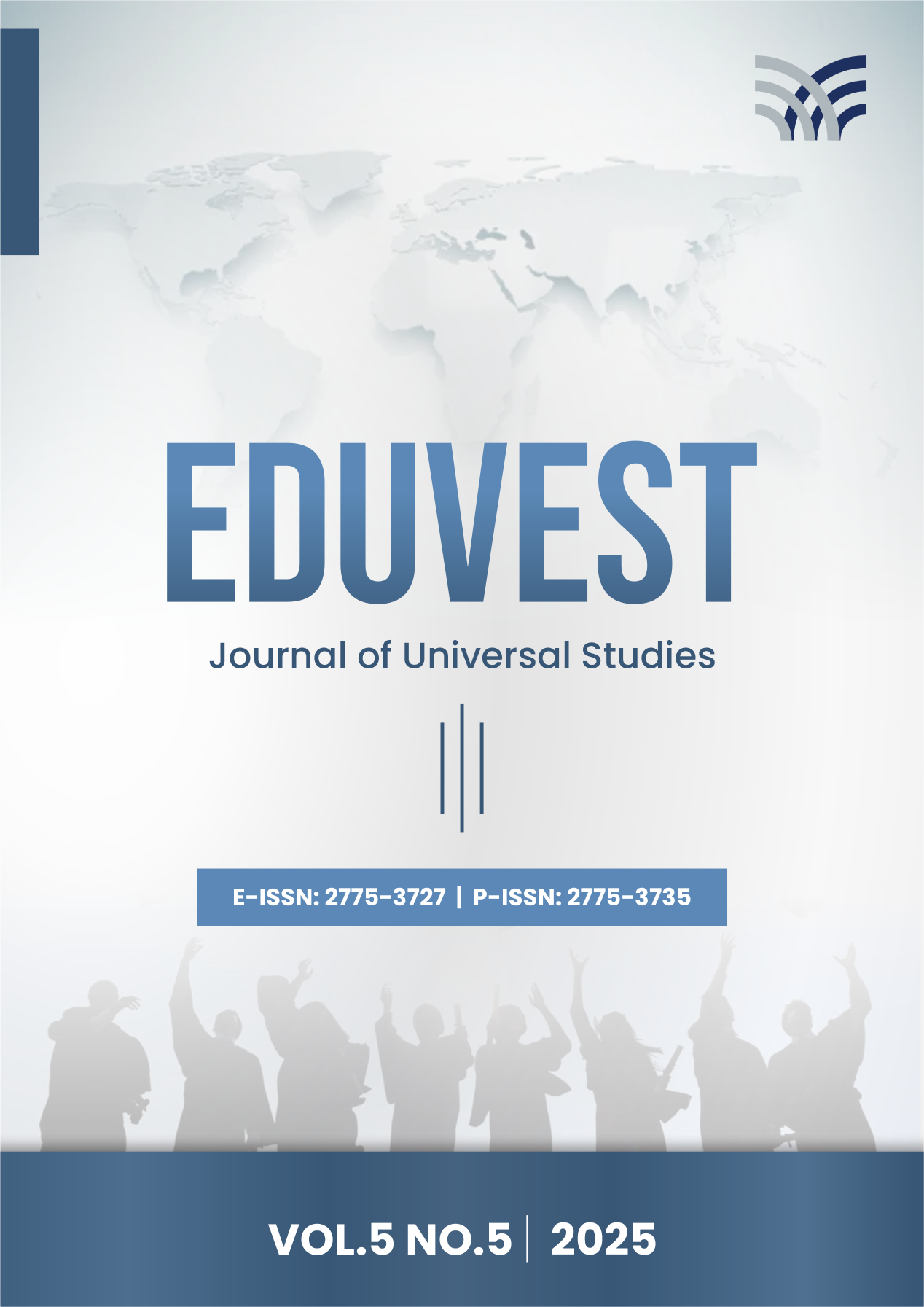Analysis of Recruitment Consultants' Work Challenges and Demands on Burnout: A Case Study at Novetra Consulting
DOI:
https://doi.org/10.59188/eduvest.v5i5.50019Keywords:
recruitment consultant, burnout, job demand, job resources, person-job (P-J) fit, person-organisation (P-O) fitAbstract
Globalization and technological advancements have transformed recruitment practices, increasing reliance on recruitment agencies. Recruitment consultants face high job demands, including dual roles in business development and recruitment, which often lead to stress and burnout. Despite existing research on internal recruiters and sales professionals, little is known about external recruitment consultants' challenges and coping strategies, particularly in multinational settings. This study aims to (1) analyze the job demands and challenges faced by recruitment consultants at NOVETRA Consulting, (2) explore how these demands contribute to burnout, and (3) identify the strategies consultants use to mitigate these pressures. A qualitative case study approach involved in-depth interviews with 12 recruitment consultants across three job levels at NOVETRA Consulting. Thematic analysis was used to interpret the data, grounded in the Job Demands-Resources (JD-R) model and theories of person-job and person-organization fit. The study reveals that recruitment consultants experience significant stress due to dual roles, high financial targets, and uncontrollable external factors (e.g., client and candidate behaviors). Misalignment between job expectations and realities exacerbates burnout symptoms, including anxiety and demotivation. Consultants cope through personal strategies (e.g., work-life balance) and colleague support, critical buffers against burnout. The findings contribute to the literature by highlighting the unique challenges of external recruitment consultants and the role of social support in mitigating burnout. Practical implications include recommendations for firms to align job expectations, provide mentorship, and foster supportive work environments. Future research could expand to comparative studies across firms or longitudinal analyses of burnout trends.
Downloads
Published
How to Cite
Issue
Section
License
Copyright (c) 2025 Justina Anggun Clarissa, Riani Rachmawati

This work is licensed under a Creative Commons Attribution-ShareAlike 4.0 International License.











